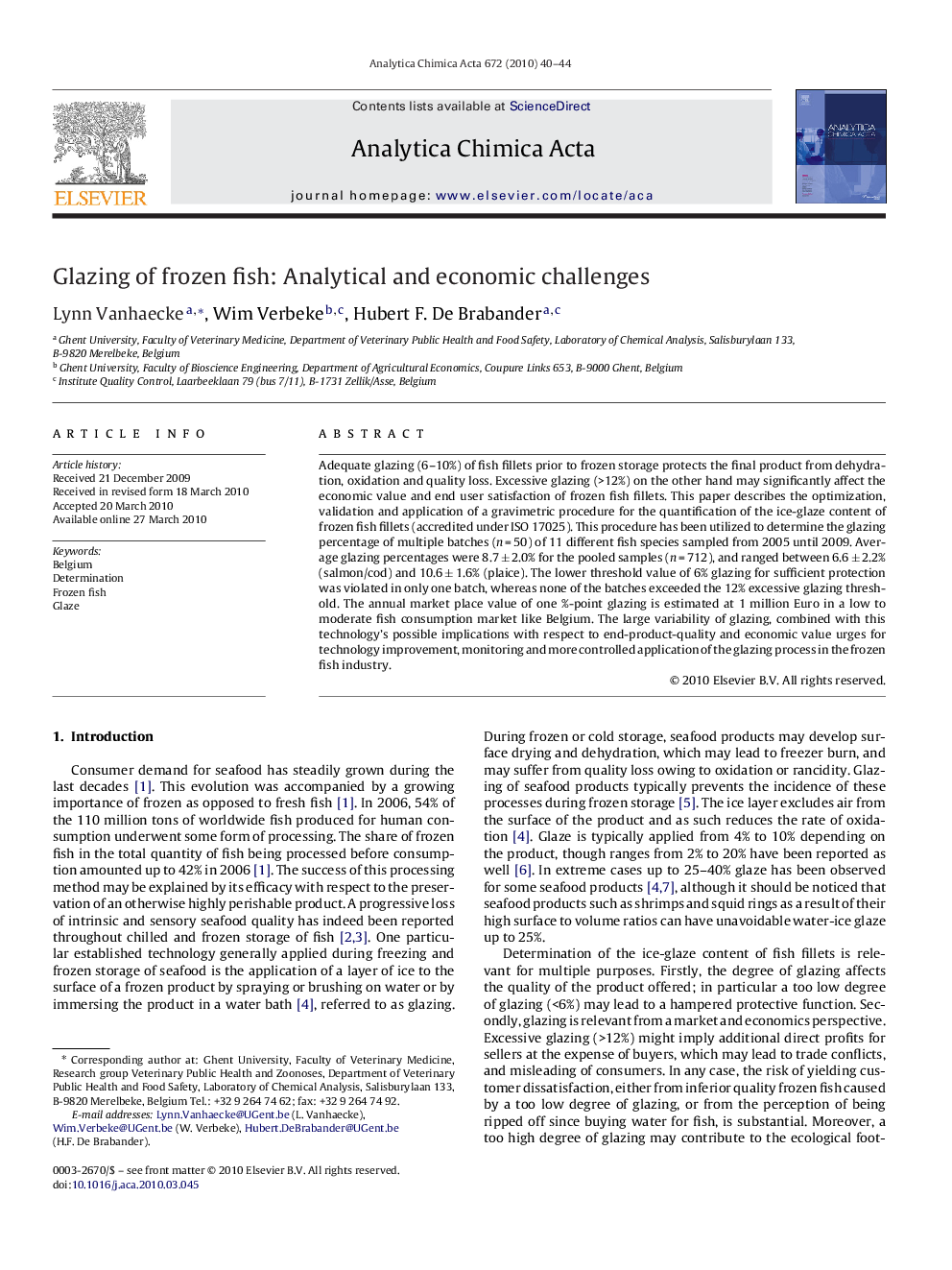| Article ID | Journal | Published Year | Pages | File Type |
|---|---|---|---|---|
| 1167489 | Analytica Chimica Acta | 2010 | 5 Pages |
Adequate glazing (6–10%) of fish fillets prior to frozen storage protects the final product from dehydration, oxidation and quality loss. Excessive glazing (>12%) on the other hand may significantly affect the economic value and end user satisfaction of frozen fish fillets. This paper describes the optimization, validation and application of a gravimetric procedure for the quantification of the ice-glaze content of frozen fish fillets (accredited under ISO 17025). This procedure has been utilized to determine the glazing percentage of multiple batches (n = 50) of 11 different fish species sampled from 2005 until 2009. Average glazing percentages were 8.7 ± 2.0% for the pooled samples (n = 712), and ranged between 6.6 ± 2.2% (salmon/cod) and 10.6 ± 1.6% (plaice). The lower threshold value of 6% glazing for sufficient protection was violated in only one batch, whereas none of the batches exceeded the 12% excessive glazing threshold. The annual market place value of one %-point glazing is estimated at 1 million Euro in a low to moderate fish consumption market like Belgium. The large variability of glazing, combined with this technology's possible implications with respect to end-product-quality and economic value urges for technology improvement, monitoring and more controlled application of the glazing process in the frozen fish industry.
